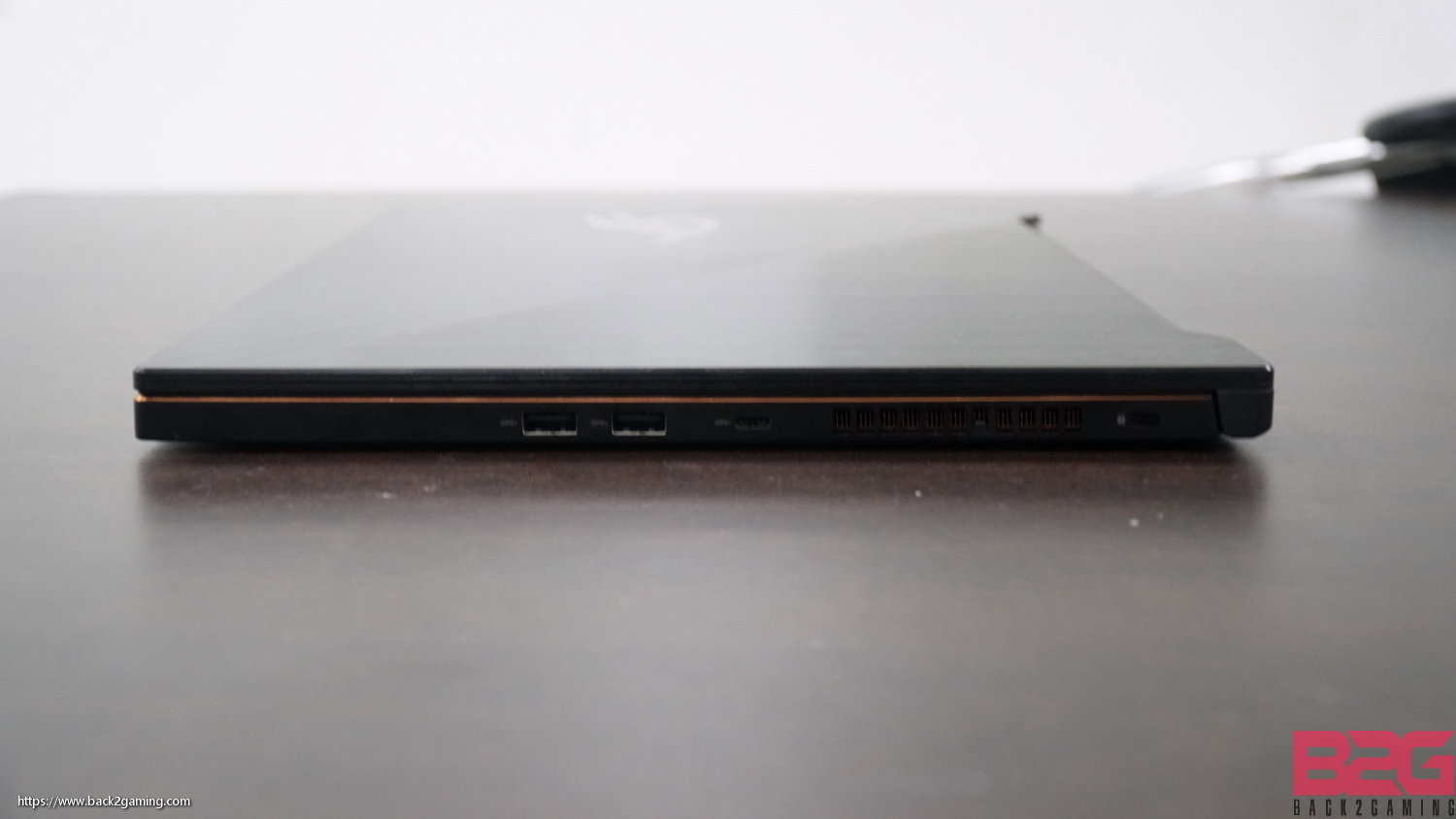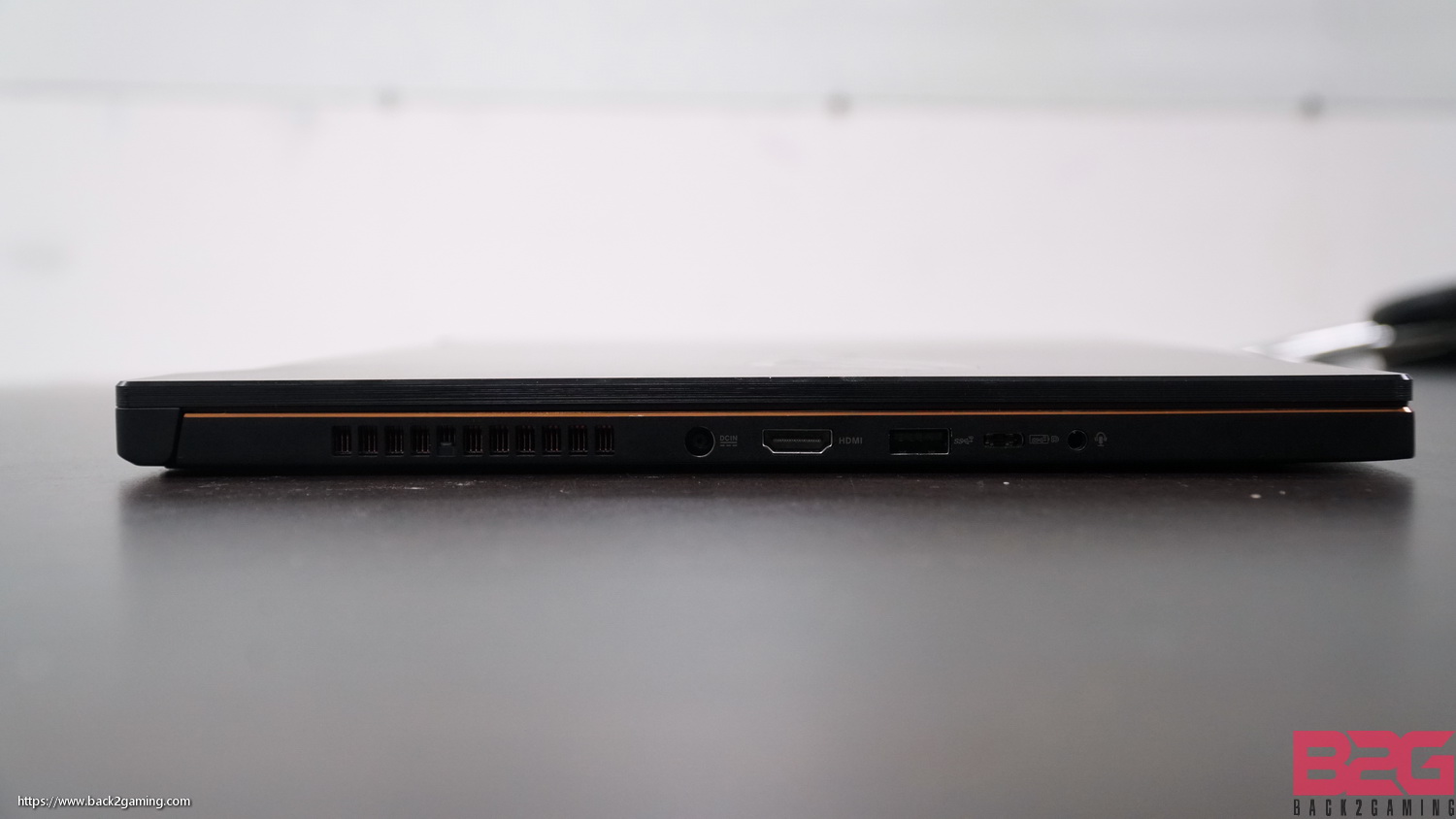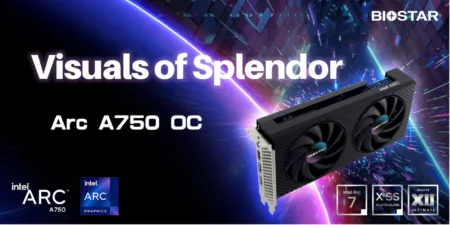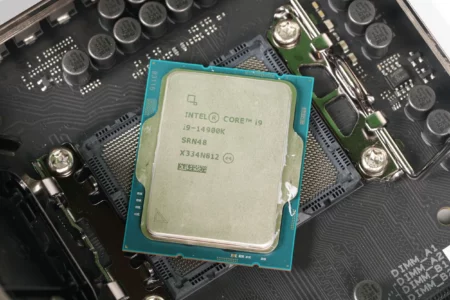For much of the life of the ROG Zephyrus line, all the currently released one are pretty much practical evolution of each other. From the original GX501, the GM501 and now the GX531 Zephyrus, they all seem like a natural progression of things in terms of slimming down but this is the mobile space we’re talking about, and especially gaming, where there exists 15″ AND 17″ models. That being said, that seems like the only natural course for ASUS to take with its Zephyrus line and today we have our first glimpse of what the future may hold for ultraslim 17″ gaming laptops with the new Zephyrus S GX701. Note that difference in naming, the current-gen Zephyrus S 15″ is model name GX531 while the new Zephyrus S 17″ is GX701. The first difference, of course, is the 17″ form factor which brings in a larger screen and more keyboard real estate along with some other drastic changes to the internals.
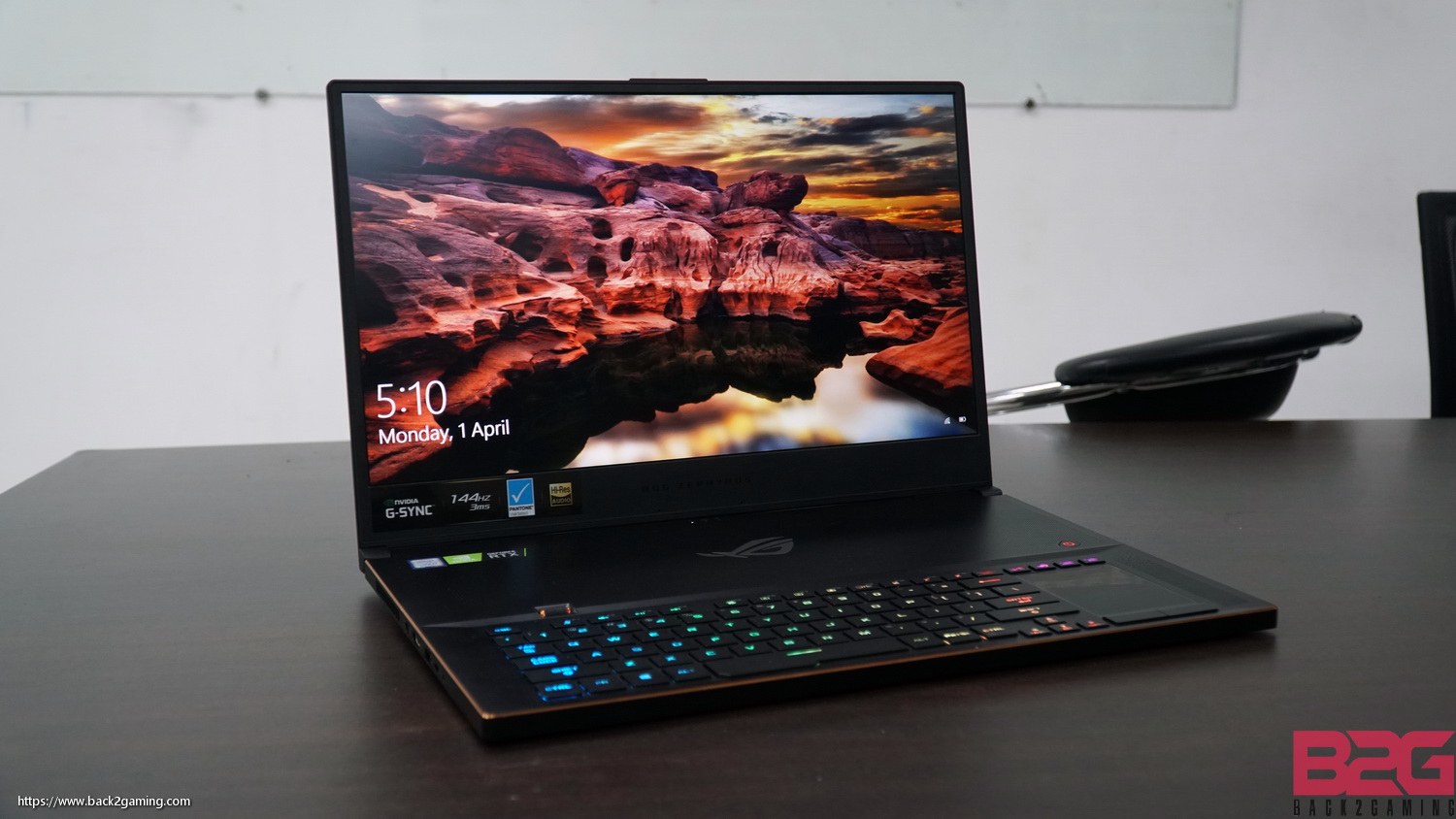
As it stands, the Zephyrus S line is ASUS’ current flagship for notebooks while a performance flagship is yet to be seen in development. This is all good as the laptop market has shifted focus from cumbersome giant desktop replacements to ultraportables that house a lot of power. While competitors like MSI and most boutique brands still offer chunky gaming notebooks, ASUS has decided to focus on portable models in the meantime.
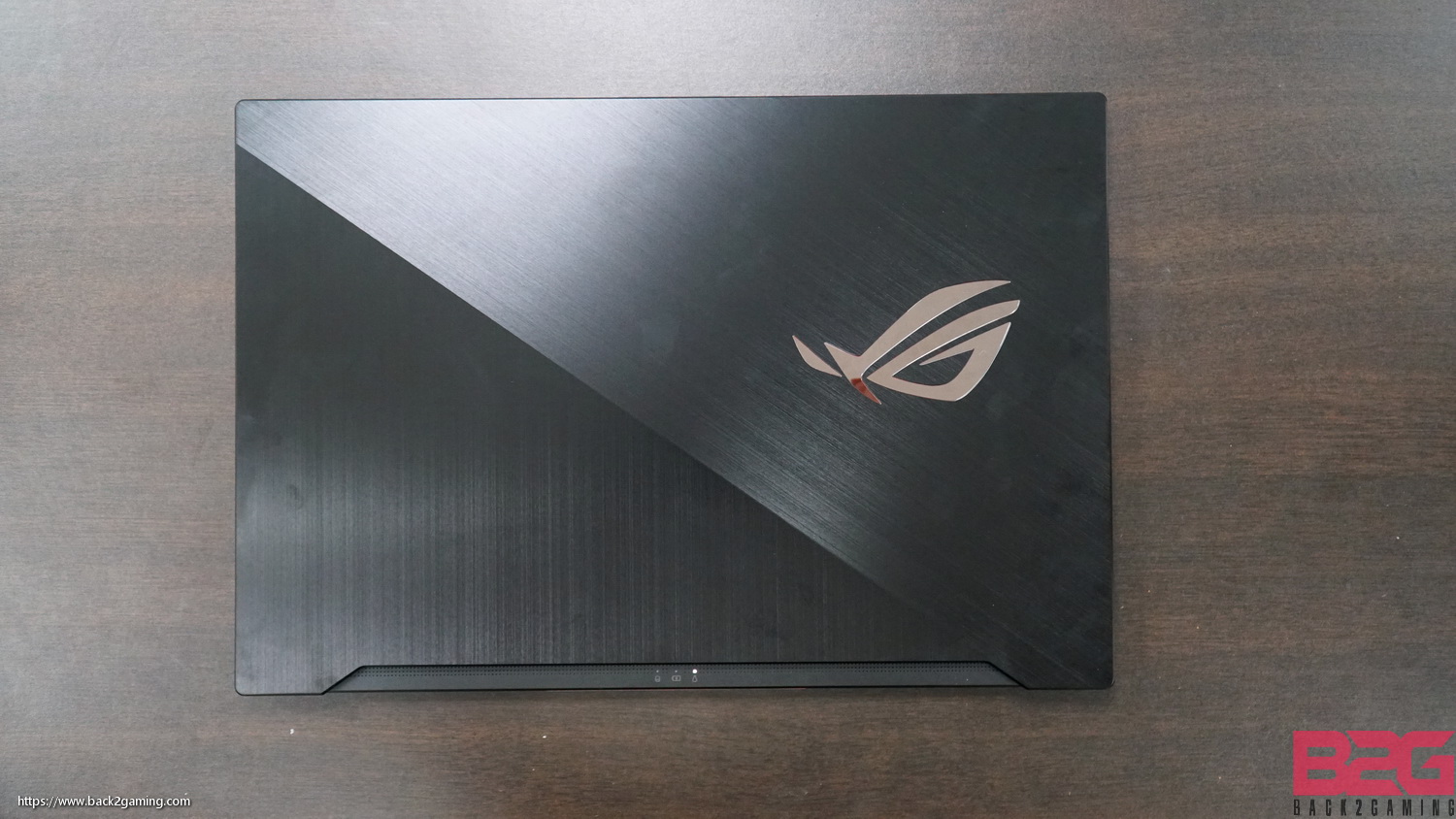
Going back to the ROG Zephyrus S GX701, it is is without a doubt the spitting image of the 15″ Zephyrus S. The top shell features a brushed aluminum finish with the illuminated ROG logo on one side. The brushed metal is finished off with a perpendicular effect for aesthetic purposes. From this angle we can see the small inset from the screen to expose the status indicator lights.
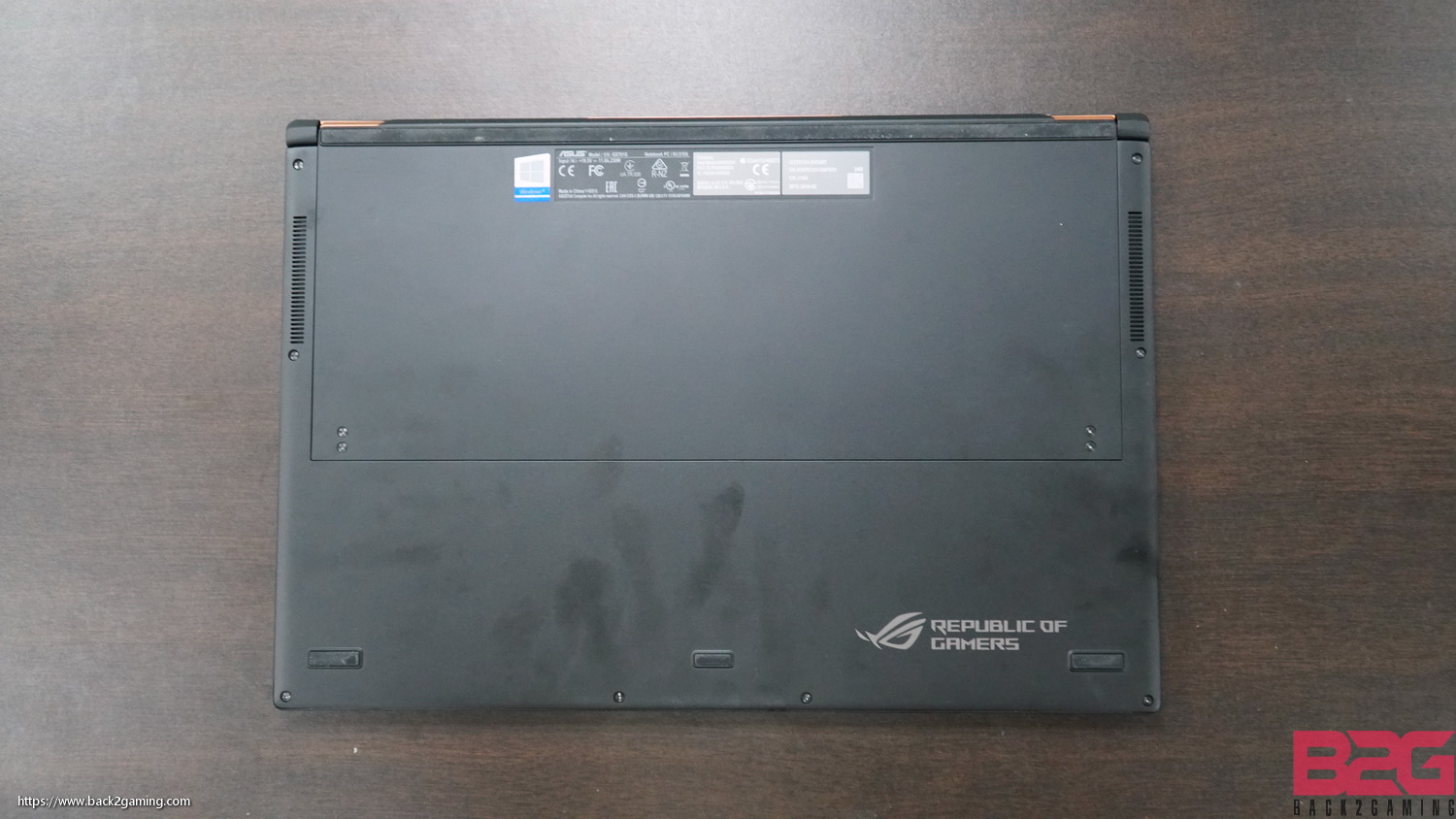
Again, from the bottom you wouldn’t realize this is a 17″ model. Most of ASUS’ notebooks are now sealed for authorized service only. As you can see from the image above, there is no access panel for expansion and you will need to have your unit serviced for an SSD or RAM upgrade. Notice the upper half of the bottom part, the separate is part of the Active Aerodynamic System which opens up to expose more air to the internals for maximum cooling efficiency.
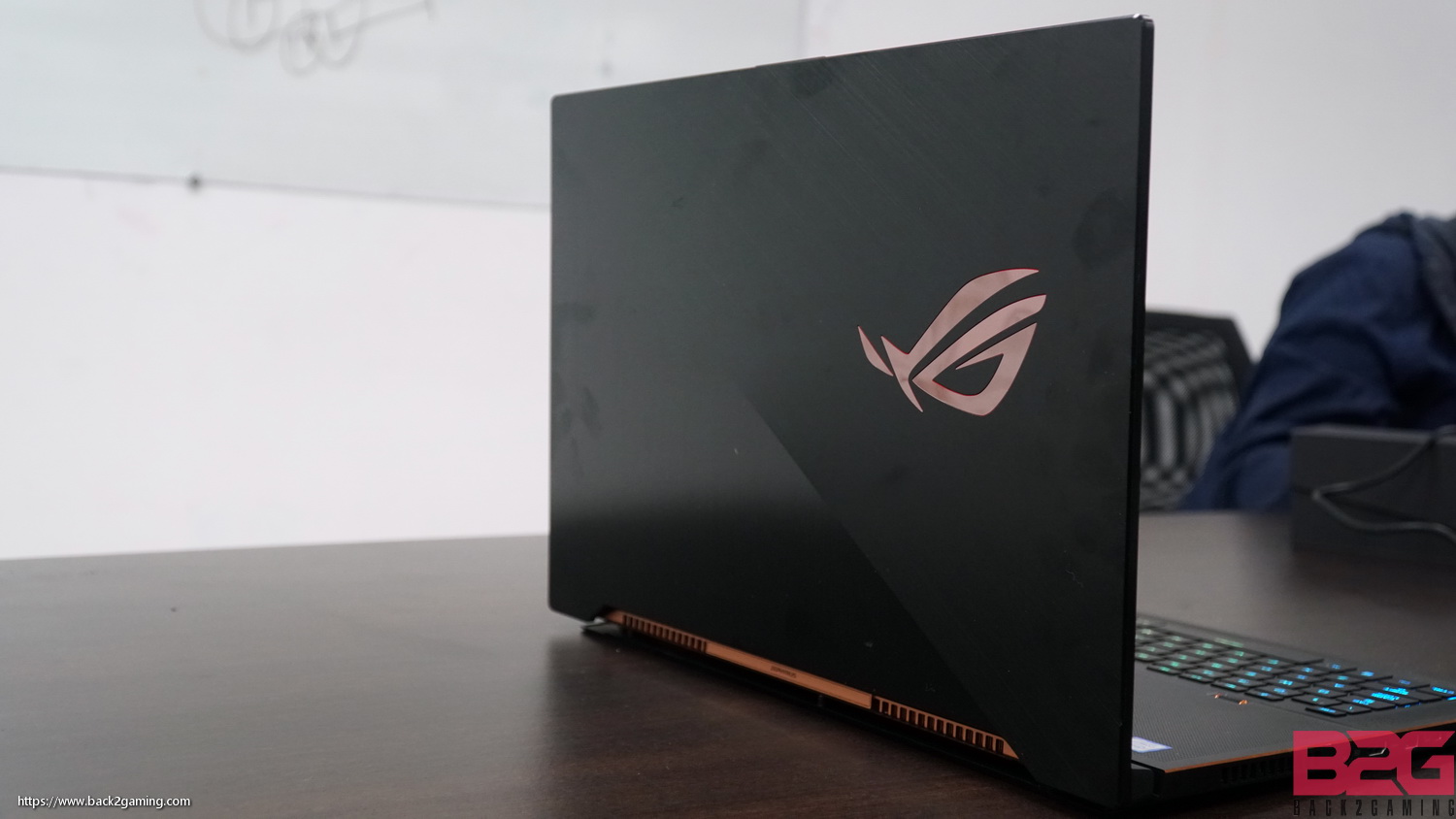
As you can from this angle there’s a bit of lift from the edges, this is AAS opened up. The vents are located at the back where warm air is exhausted. A bronze plate highlight is there for aesthetic purposes.
Here we have a shot of the two sides where I/O connections are located. Over at the right we have a pair USB3.1 ports as well as a single Type-C port. On the other side we have power power for the adaptor, HDMI port, USB3.1 combo DisplayPort and a combo audio port. A Kensington lock notch is also on the right side on the corner.
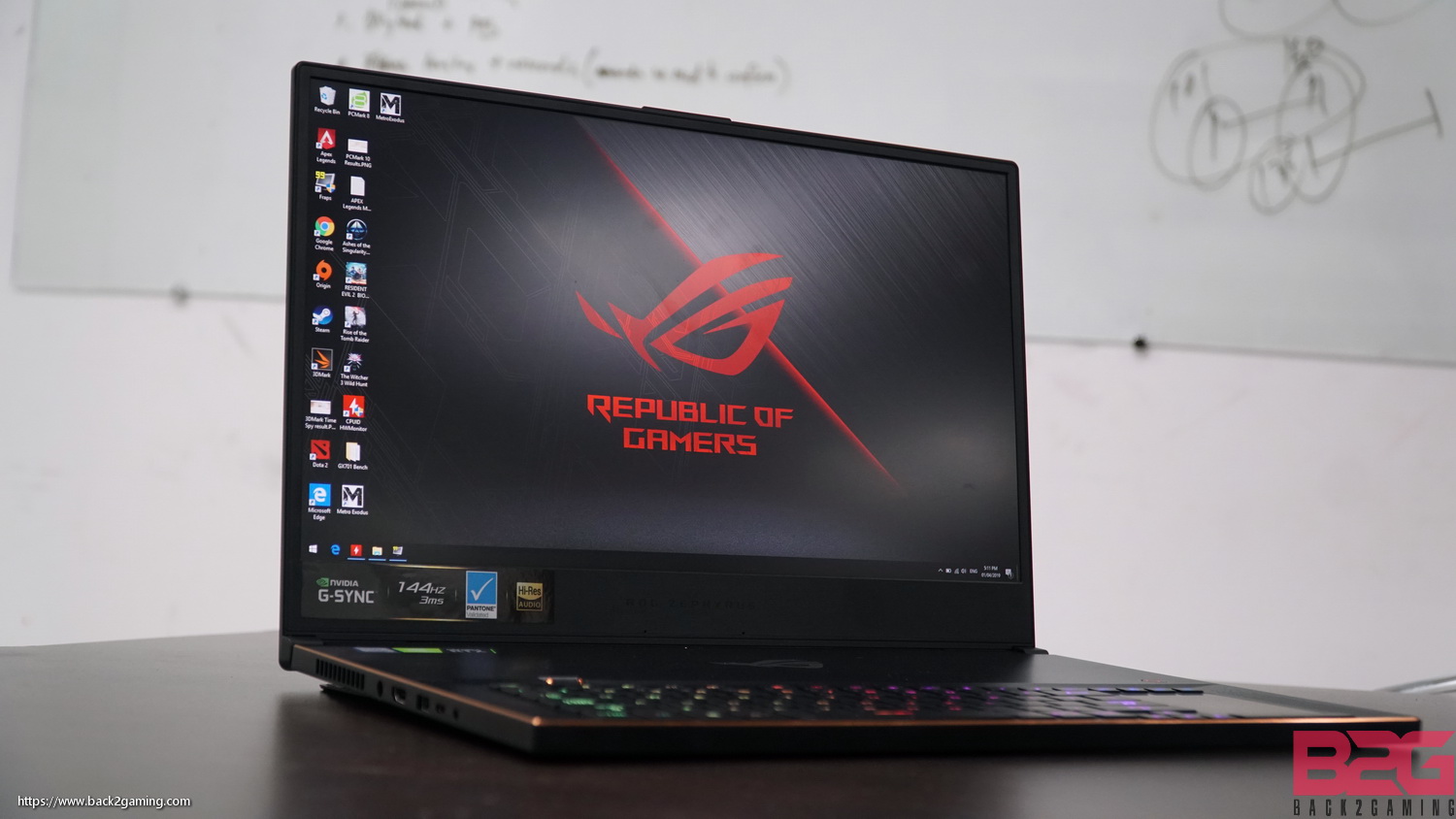
Before we dive into specs, let’s talk about the visible changes. First up we have the screen. This model is a 1080p 144hz G-Sync screen but the Zephyrus S GX701 will have screen variants including one with a 4K screen and an HDR model. All screens will be Pantone Validated. We’ll discuss variations later on.
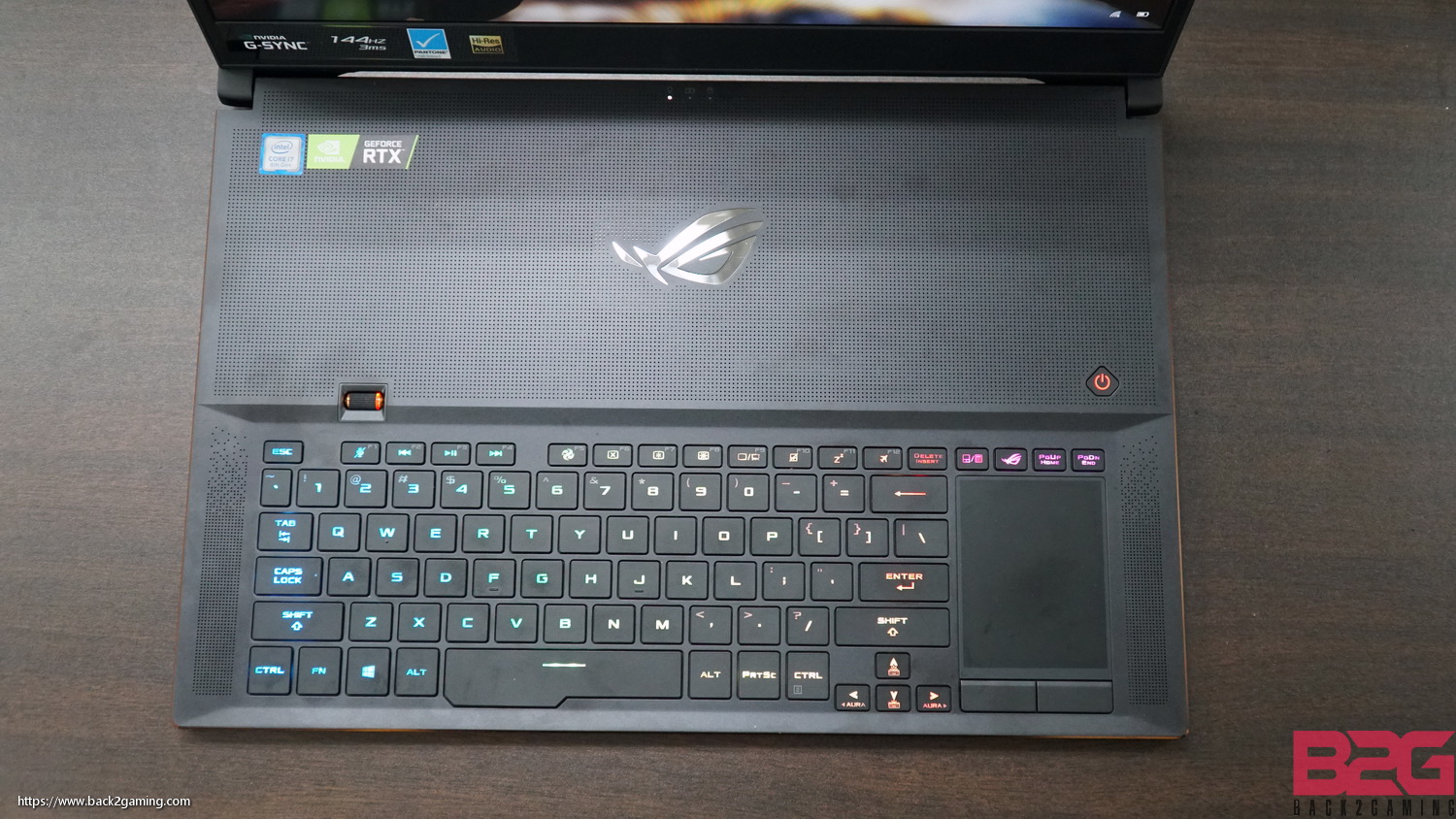
The GX701 also introduces an upgrade of sorts to the keyboard: we get better RGB. The GX531 lacked per-key illumination with the previous release and the GX701 updates that with per-key lighting. Some people really don’t care, some do. I’d just like to point out that of all the input options, the addition of the volume wheel is the most game-changing thing for me on a notebook. Fiddling for the Fn+ whichever F1-F12 key is the volume is just hard on the various layouts of keyboards out there for notebooks.
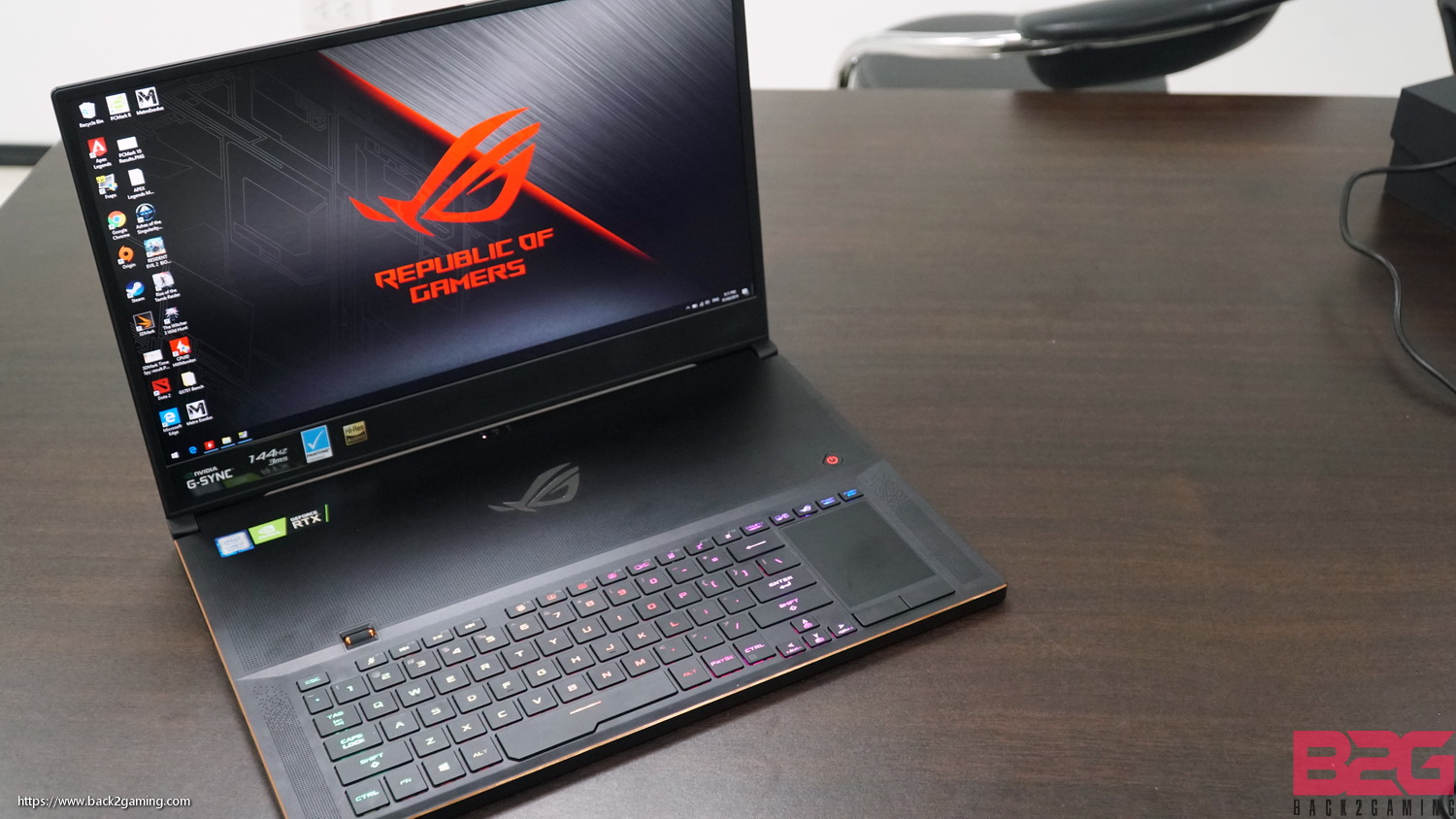
Diving right into specs, the larger case allowed ASUS to be a bit more daring. They stalled the RTX 2080 on the GX531 due to thermal constraints but with the larger body of the GX701 it allowed them use up to an RTX 2080 Max-Q. This is followed by RTX 2070 and RTX 2060 models. On the CPU side they all share either an 8th-gen or an upcoming 9th-gen CPU. The Intel 8th-gen CPU is the i7-8750H 6-core / 12-thread processor. All models share a 24GB RAM option combinations of SSD/HDD or complete SSD for storage. Again, this is a 1080p 144hz panel so gaming on an RTX 2060 is already butter smooth and the RTX 2080 Max-Q and RTX 2070 just lets the notebook push itself much further.
We’ve becoming spoiled by how good current-gen parts are that we fail to marvel at the comparative desktop equivalent of this notebook is. Even an ITX build will still be heavier than this notebook and still lack the peripherals. Its an impressive engineering feat but one that is in heavy contention in the gaming laptop market right now. But at 17″, while it is light and thin, it is still wide and for those that prefer to travel light, it is still trumped by its 15″ brothers. The option for Power Delivery allows smaller power bricks to be used without carrying the larger ones that both size models have.
Performance-wise, we’ve yet to review this thing but from a usability standpoint, its already an improvement from a tested design and there’s really only so little room to innovate in. While ASUS may tout it as the superior performer specs-wise and screenwise, portability is still key and many users who have be able to compromise for the larger screen space are the main audience for the ROG Zephyrus GX701.
We’ll have a full review coming in a future article. Stay updated by following us in Facebook or Twitter.



